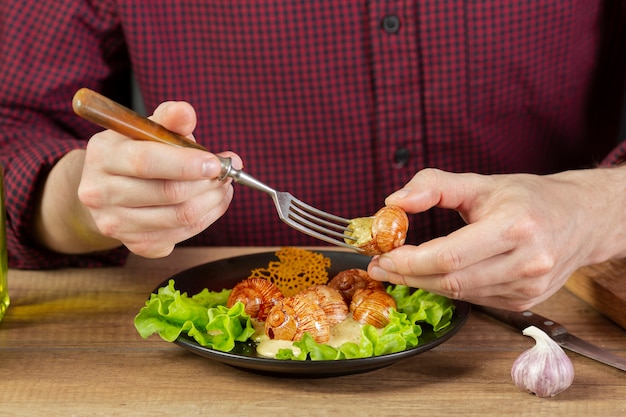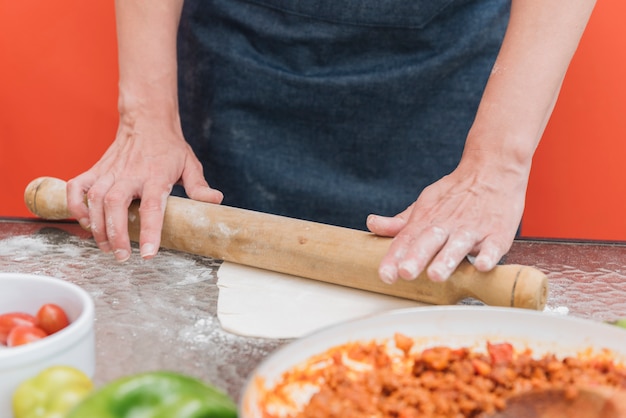Let's be honest, chicken tenders are a universal favourite. Who doesn't love those crispy, golden-brown morsels, perfect for dipping and savouring? They're a staple in my household, from family dinners to weeknight snacks, and over the years, I've become a bit of an expert on making them juicy, crispy, and bursting with flavour. So, grab a notepad, grab your apron, and let's dive into the world of chicken breast tenders. We'll explore all the secrets to creating tender, juicy, and absolutely delicious results that'll have everyone begging for more.
(Part 1) Choosing the perfect chicken

The first step in crafting perfect chicken tenders is choosing the right chicken. You've got to start with a good foundation, and I've learned a few things about selecting the perfect cut. It's not just about picking any old breast, there's a whole science to it, and trust me, it makes a world of difference.
The Importance of Freshness
Let's start with the basics: always choose fresh chicken. Freshness is key to great flavour and tenderness. If you can, buy chicken from a local butcher or a reputable supermarket that has a high turnover. Look for chicken that has a bright, pale colour, and a slightly firm texture. You’ll want to avoid chicken that has a grey or dull colour, or that feels slimy or sticky. These are signs that the chicken might be past its prime.
The Cut Matters
Okay, so you've got your fresh chicken. Now, let's talk about the cut. Ideally, you're looking for chicken breasts that are relatively thin and even in thickness. This is going to make a big difference in how evenly they cook. If you have thicker breasts, don't worry, you can always slice them in half lengthwise to create thinner pieces. I know it sounds a bit fiddly, but trust me, the extra effort is worth it. It'll prevent them from becoming dry on the outside while the inside is still raw.
Boneless vs. Bone-In: A Matter of Preference
Now, you've got a choice: boneless, skinless chicken breasts or bone-in chicken breasts. Both have their pros and cons. I personally prefer boneless, skinless chicken breasts because they're easier to work with and clean up. But, if you're a fan of the flavour and texture of bone-in chicken, then go for it! Just make sure you debone them properly before cutting them into tenders. You'll need a sharp knife and a bit of patience for this step, but the results are worth the effort.
Storage Tips for Maximum Freshness
Once you've got your perfect chicken, it's important to store it correctly. Keep it in the refrigerator, wrapped tightly in plastic wrap or foil, for up to 3 days. Or, if you need more time, you can freeze it for up to 3 months. Just be sure to thaw it completely in the fridge before cooking. Don't even think about thawing it at room temperature, it's a recipe for food poisoning.
(Part 2) Preparing the Chicken: The Foundation of Flavor

Right, so you've got your perfect chicken breasts. Now it's time to get them ready for the main event - the cooking! This is where your skills really get put to the test.
Trimming the Fat: For a Leaner, More Flavorful Result
Start by trimming any excess fat from the chicken breasts. It's usually found along the edges and sometimes underneath. You don't need to go overboard, just trim off the excess to prevent it from becoming greasy. A little bit of fat is good, but too much will make your tenders taste greasy and not as flavorful.
Cutting the Chicken into Tenders: Mastering the Technique
Alright, time to transform those breasts into tenders. This is where you need a bit of finesse. You're looking to create strips that are about 1 to 1.5 inches wide and 3 to 4 inches long. If you're using a bone-in breast, make sure you remove the bone before cutting. It's a bit like a little chicken surgery, but it's important to do it carefully so you don't end up with splinters of bone in your meal.
Tenderizing the Chicken: Optional but Beneficial
You can tenderize the chicken, but it's not always necessary. If you're using thin chicken breasts, they'll probably be tender enough. But if you've got thicker pieces, or if you just want to be extra sure, then tenderizing can be a good idea. There are lots of tools you can use for this, like a meat mallet or a fork. Just be careful not to overdo it, you don't want to turn the chicken into mush. You can also use a marinade to tenderize the chicken, but we'll get to that later.
Seasoning the Chicken: A Symphony of Flavors
Now, it's time to give those tenders some flavour! Salt and pepper are essential, but don't be afraid to experiment with other spices. Paprika, garlic powder, onion powder, and cayenne pepper are all great options. You can even use a pre-made seasoning blend for convenience. I like to use a blend that has a little bit of heat. A pinch of smoked paprika adds a lovely depth of flavour, and a sprinkle of cayenne gives a subtle kick.
(Part 3) Mastering the Art of Breading: The Key to Crispy Perfection

Ah, breading. The heart and soul of a crispy chicken tender. Get this wrong, and you'll end up with soggy, lifeless strips. Get it right, and you'll have a golden-brown masterpiece. Let me share my secrets.
The Breadcrumb Magic: Panko, the Secret Weapon
We're talking about breadcrumbs here, people. Not just any breadcrumbs, but the good stuff. I use panko breadcrumbs, which are Japanese breadcrumbs that are light and airy. They create a crispy, crunchy coating that's simply divine. They absorb less oil, resulting in a lighter, crispier texture than regular breadcrumbs. But, if you don't have panko, regular breadcrumbs will do the trick. Just make sure they're fresh and not too fine.
The Wet and the Dry: A Culinary Duet for Deliciousness
Here's the key to perfect breading: the wet and the dry. You start by dipping the chicken in a wet batter, followed by a dry breadcrumb coating. This creates a double layer of deliciousness that locks in moisture and ensures a crispy outer layer. It's like a culinary duet, with the wet batter providing a base for the breadcrumbs to cling to, and the dry breadcrumbs creating that coveted crispy crust.
The Perfect Wet Batter: Buttermilk, the Secret Ingredient
For the wet batter, I like to use a mixture of buttermilk and egg. Buttermilk adds a slight tanginess and helps to tenderize the chicken. The egg helps to bind the breadcrumbs. You can also use plain milk or water, but buttermilk is my go-to. It gives a nice tangy flavour and also helps to make the coating stick better.
The Breadcrumb Coating: A Golden, Crispy Crust
After the wet batter, comes the dry coating. Here, you'll want to press the chicken tenders into your breadcrumbs, ensuring they're fully coated. You can either use your hands or a fork for this. If you find the breadcrumbs aren't sticking, add a bit more flour to the wet batter. It will help thicken the batter and make it more adhesive.
The Secret to Crispy Tenders: Patience is Key
Here's a little tip I learned from my grandma: Let the chicken sit for about 10 minutes after breading. This gives the breadcrumbs a chance to set and prevents them from falling off during cooking. It's all about letting the breadcrumbs set and dry out a little bit, which helps them to crisp up beautifully during cooking.
(Part 4) Cooking Methods for Crispy Perfection: From Pan-Frying to Baking
Alright, your chicken tenders are prepped and ready to go. Now, let's talk cooking methods. I've tried them all, and I'm here to tell you, there's a method for every mood.
Pan-Frying: Quick, Easy, and Delicious
Pan-frying is my favourite method, especially for smaller batches of chicken tenders. It's quick, easy, and produces the most gloriously crispy results. Heat a skillet over medium-high heat, add a bit of oil, and then carefully place your tenders in the pan. Cook them for about 3 to 4 minutes per side, or until they're golden brown and cooked through. Don't overcrowd the pan, give the tenders space to cook evenly.
Oven-Baking: Simple, Healthy, and Convenient
For a healthier option, you can bake your chicken tenders in the oven. Preheat your oven to 400°F (200°C), place your breaded tenders on a baking sheet lined with parchment paper, and bake for about 15 to 20 minutes, or until they're cooked through. You can also use an air fryer for an even crispier result. The air fryer is a great way to get that crispy texture without using as much oil.
Deep-Frying: The Ultimate Indulgence
Let's be honest, sometimes you just want that ultimate crispy, golden-brown goodness that only deep-frying can deliver. For this, heat your oil in a deep fryer or a large pot to 350°F (175°C) and carefully fry the tenders for about 3 to 4 minutes, or until they're golden brown and cooked through. Be careful not to overcrowd the fryer, and always make sure the oil is at the correct temperature. Overcrowding the fryer will lower the oil temperature, leading to soggy tenders.
(Part 5) Dipping Sauces: A Symphony of Flavors
Alright, your chicken tenders are cooked to perfection. Now, it's time to add the final touch - dipping sauces. This is where you can really get creative and have some fun!
Classic Honey Mustard: Sweet and Tangy Perfection
This is a classic for a reason. It's sweet, tangy, and a perfect match for crispy chicken tenders. Simply combine honey and Dijon mustard in a bowl, and adjust the ratio to your liking. A good starting point is a 2:1 ratio of honey to mustard.
Tangy Ranch Dressing: A Creamy Delight
A ranch dressing dipping sauce is another favourite, especially with a touch of dill. You can use store-bought ranch dressing or make your own. There are lots of great recipes online for homemade ranch dressing, and you can even add a little bit of heat by adding a dash of cayenne pepper.
Spicy Buffalo Sauce: A Kick of Heat
If you like a bit of heat, then you've gotta try a buffalo sauce. It's made with hot sauce, butter, and vinegar, and can be adjusted to your desired level of spiciness. A classic buffalo sauce is made with Frank's RedHot sauce, but you can experiment with different hot sauces to find your favourite.
Sweet Chili Sauce: A Sweet and Spicy Fusion
For something a bit different, try a sweet chili sauce. It's a sweet and tangy sauce that's made with chili peppers, sugar, vinegar, and garlic. It adds a lovely sweetness and a bit of a kick. You can find it at most grocery stores or make your own.
Homemade Dipping Sauce Ideas: Unleash Your Creativity
Get creative with your dipping sauces. Try a garlic aioli, a creamy sriracha sauce, or even a simple lemon-herb sauce. You can also add a bit of sweetness by adding honey or maple syrup to your sauces. The possibilities are endless!
(Part 6) Serving Suggestions: From Simple to Spectacular
Right, so your chicken tenders are cooked and you've got your sauces. Now, let's talk about serving. It's all about making those tenders the star of the show.
Simple and Satisfying: A Classic Combination
For a simple and satisfying meal, serve your chicken tenders with your favourite dipping sauce and a side of fries or potato wedges. You can also add a side of coleslaw or a simple salad. A classic combination that's always a winner.
Family-Friendly Feast: A Comforting Meal
For a family-friendly feast, try serving your chicken tenders with mashed potatoes, gravy, and a green vegetable like peas or green beans. You can also add a side of cornbread or biscuits. A comforting meal that's perfect for a family gathering.
Elevated Elegance: Turning Tenders into a Gourmet Dish
Want to elevate your chicken tenders? Serve them with a gourmet dipping sauce like a truffle aioli or a balsamic glaze. You can also add a side of roasted vegetables or a quinoa salad. A touch of class for a special occasion.
Chicken Tender Wraps: A Lighter Option
For a lighter option, try making chicken tender wraps. Simply place your cooked chicken tenders in a tortilla with your favourite toppings, like lettuce, tomato, and cheese. You can even add a dollop of sour cream or salsa. A great way to make a quick and easy lunch or dinner.
(Part 7) Variations and Experimentation: Beyond the Basics
Alright, so you've mastered the basics. Now it's time to have some fun and get creative! There are endless variations on the classic chicken tender recipe.
Flavored Chicken Tenders: Adding a Touch of Flavor
Try adding different herbs and spices to your chicken tenders for a unique flavour twist. You could try Italian seasoning, cajun seasoning, or even a Moroccan spice blend. You can also add a pinch of smoked paprika, a dash of cayenne pepper, or a sprinkle of garlic powder.
Stuffed Chicken Tenders: A Decadent Treat
For a more decadent treat, try stuffing your chicken tenders with cheese, spinach, or even a sausage mixture. Just make sure to wrap them tightly to prevent the filling from spilling out during cooking. You can use toothpicks to secure the filling.
Chicken Tender Skewers: A Fun and Easy Appetizer
For a fun and easy appetizer, try making chicken tender skewers. Simply thread your cooked chicken tenders onto skewers with cherry tomatoes, onions, and peppers. You can even add some pineapple or mango for a tropical twist.
(Part 8) Leftover Chicken Tender Magic: Making the Most of Your Leftovers
Let's be honest, sometimes we end up with leftover chicken tenders. Don't fret! There are plenty of ways to make those leftovers shine again.
Chicken Tender Salad: A Refreshing and Easy Meal
Add your leftover chicken tenders to a salad for a protein boost. You can use a simple green salad or get creative with a more complex salad, like a quinoa salad or a pasta salad. A great way to add some protein to your lunch or dinner.
Chicken Tender Pizza: A Delicious and Easy Topper
Turn your leftover chicken tenders into a delicious pizza topping. Simply add them to your favourite pizza crust with your favourite cheese and other toppings. You can add some bbq sauce for a smoky flavour.
Chicken Tender Soup: A Hearty and Satisfying Meal
Add your leftover chicken tenders to a soup or stew for a hearty meal. You can add them to a chicken noodle soup, a tomato soup, or even a creamy potato soup. It adds some extra protein and flavour to your soup.
FAQs: Your Chicken Tender Queries Answered
I know you've got questions. So, let's tackle some of the most common ones.
| Question | Answer |
|---|---|
| How do I know if my chicken tenders are cooked through? | The best way to check is to use a meat thermometer. The internal temperature should reach 165°F (74°C). You can also cut into a tender to check if the juices run clear. If they're still pink, they need to be cooked a bit longer. |
| What can I do if my chicken tenders are dry? | This can happen if you overcook them. You can try adding a little bit of moisture by adding a sauce or gravy, or by serving them with a side of mashed potatoes or rice. You can also try using a marinade before cooking to help keep the chicken moist. |
| How long can I keep cooked chicken tenders in the fridge? | You can keep cooked chicken tenders in the refrigerator for up to 3 days. Just make sure to store them in an airtight container. This will help to prevent them from drying out and keep them fresh. |
| Can I freeze cooked chicken tenders? | Yes, you can freeze cooked chicken tenders for up to 3 months. Just be sure to wrap them tightly in plastic wrap or foil before freezing. This will help to prevent freezer burn. |
| Can I use chicken breasts instead of chicken tenders? | Yes, you can use chicken breasts, but you'll need to cut them into tender-sized pieces. You can also buy pre-cut chicken tenders from the grocery store, which are a convenient option. |
So, there you have it. My ultimate guide to juicy, flavorful chicken breast tenders. Now, go forth and create your own culinary masterpiece!
Everyone is watching

Corn on the Cob: The Ultimate Guide to Perfectly Cooked Ears
Healthy MealsAh, corn on the cob. Just the name evokes images of sunny days, barbecues, and that sweet, juicy flavour that ...

Perfect Pork Roast Oven Cooking Time: A Guide to Delicious Results
Healthy MealsThere's something truly satisfying about a perfectly roasted pork. The aroma alone is enough to make your mout...

Scallops: The Ultimate Guide to Perfect Cooking
Healthy MealsAh, scallops. Those delicate, sweet, and utterly delicious morsels of the sea. They hold a special place in my...

Ham Cooking Time: How Long to Bake, Smoke, or Boil a Delicious Ham
Healthy MealsAh, ham. It's a classic, isn't it? A real crowd-pleaser, especially around holidays. And when done right, it'...

Spaghetti Squash: The Ultimate Guide to Cooking and Serving
Healthy MealsRemember that time you saw spaghetti squash at the supermarket, looking all bumpy and strange, and thought, "W...
